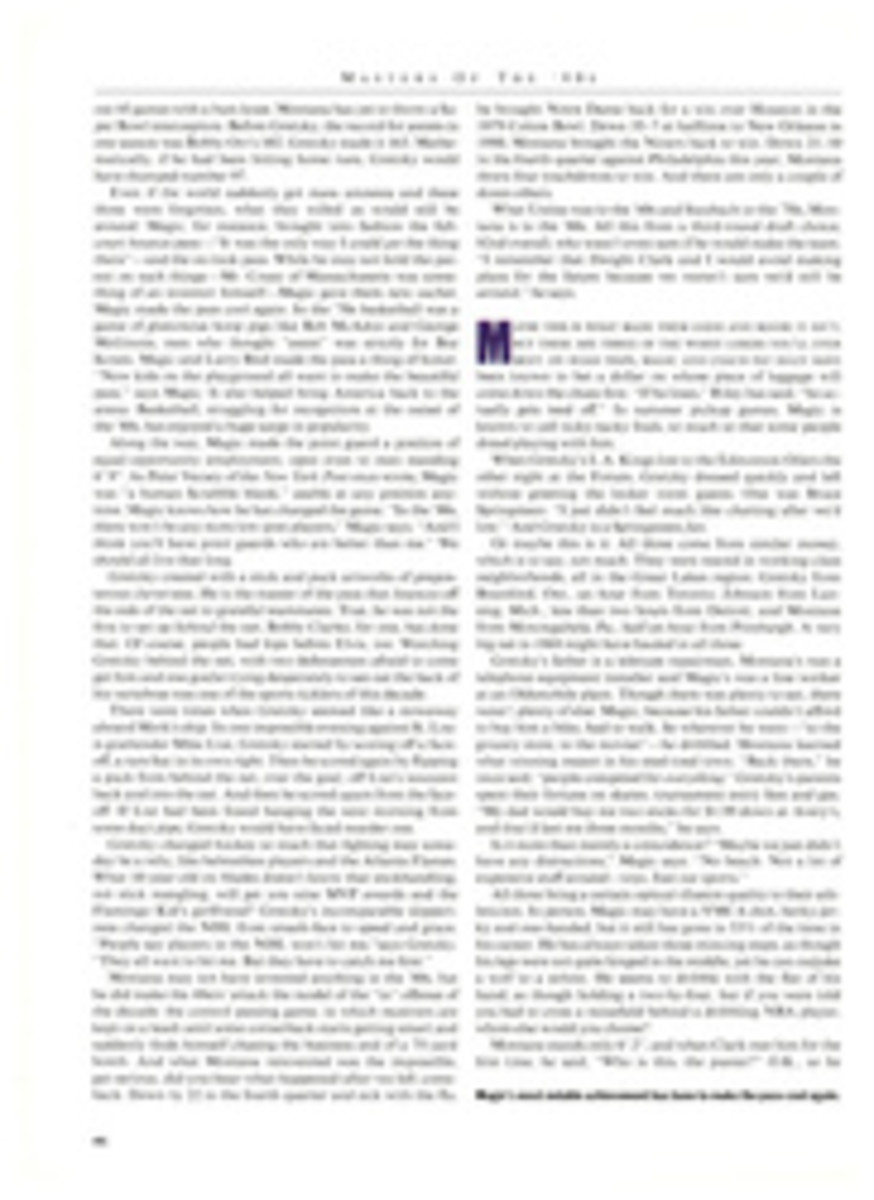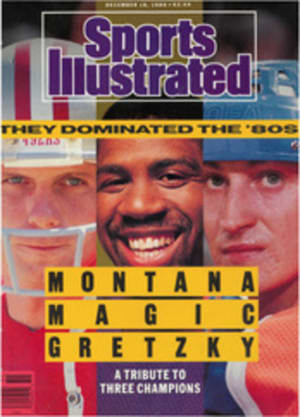
ONE FOR THE AGES
Only moments had passed since the end of the Roberto Duran Turkey Shoot. Sugar Ray Leonard, still the WBC super middleweight champion, was back in his dressing quarters in the newly opened Mirage hotel in Las Vegas. Blood leaked from a wide gash on his left eyelid. Both lips were bloody from two cuts inside his mouth. More blood seeped from a cut on his right eyebrow. Except for the happiness spilling from his bright brown eyes, he had the look of a guy who had just been mugged in a saloon parking lot.
Leonard's lawyer-friend-manager, Mike Trainer, wore a worried look. "Ray, you just pitched a shutout. You used all the gifts God gave you," Trainer told him. "People said you've been getting hit too much. Tonight you finessed it. You were beautiful. But now you are going to a press conference, and people will demand to know why you didn't fight a war. They won't want to hear about a shutout."
Leonard's lips parted in a bloody smile. "I didn't fight for them or anyone else," he said. "They all said I didn't have it anymore. I fought this one for me. I fought this one for my children and my grandchildren." That was what last Thursday night's fight was all about. More than 16,000 people jammed the outdoor arena at the Mirage; millions watched on pay-per-view or closed-circuit television. And millions more will see it replayed on HBO. Leonard was paid at least $15 million for the bout; Duran, the WBC middleweight champion, made close to $8 million. But to Leonard, none of that mattered. Critics had said that, at 33, he was old, that his legs were gone. For him, this was a spit-in-their-eye fight.
From the first day in camp Leonard trained as if this match were his last. The public was barred from his workouts. His entourage was cut from 21 to six. For his previous fight, a draw with Thomas Hearns on June 12, Leonard had retained two trainers, Dave Jacobs and Pepe Correa. This time he had only Correa, and he instructed Correa not to spare the whip. "For the first time in a long time I allowed someone to push me," said Leonard.
Correa pushed, hard. On the third day of training, Leonard was hitting the heavy bag for a round. But with a minute still left, he stopped and walked away. "Get back here," Correa growled. Turning, Leonard glared at Correa. Then he said, "Thank you," and returned to the heavy bag.
Leonard would set off on a two-mile run; Correa would order him to run an extra two. Young, tough sparring partners were brought in. Gradually, the 33-year-old reflexes and legs became as they were when Leonard was 25.
Always before, Leonard had fought to please others—as an Olympic champion in 1976 and as a professional, winning 35 of 37 fights and five world championships. He was like a man who had climbed Mount Everest more for the entertainment of a world audience than for his own satisfaction. Now he could see another peak, 1,000 feet higher, that he wanted to climb for himself. And for his two sons and their future sons. "When they look at the tapes of my last fight, I don't want them looking at that damn draw with Hearns," Leonard said.
Duran, though shopworn at 38, was the perfect foe. For the first time since 1984, Leonard would be fighting someone his own size. For most of the decade he has been a blown-up welterweight fighting bigger people, including a light heavyweight champion, Donny Lalonde, whom he knocked out in November 1988. When Duran and Leonard fought in June 1980, Leonard, a greyhound, had lost to Duran, a pit bull, because he'd tried to fight like a pit bull.
Leonard thought he had erased that strategic error in November 1980, when he and Duran fought again. Leonard danced away from Duran's fists, but Duran stole the moment from him: Frustrated and furious, in a strange act of defiance, Duran quit in the eighth round. That was the no màs fight. Boxing fans ignored Leonard's victory; they spoke only of Duran's defeat. "I made him quit," Leonard protested angrily in the ensuing years, but no one listened.
And so, Duran and Leonard met for the third time on a cold, breezy night in Las Vegas. The public's opinion of Leonard was reflected in the odds: At 9 to 5, he was only a narrow favorite. It only made Leonard's eyes colder.
Leonard's fight plan could have been devised by Sun Tzu, who wrote the bible of military strategy, The Art of War, in 500 B.C. His tactics were textbook perfect, the sort, as Leonard said after his lopsided victory, "that you try to teach young fighters." The 12-round bout had all the beauty of a bullfight, but without the expected horror of the kill.
Still, the fans didn't like it; Leonard gave them artistic perfection when they wanted heated battle, and they booed lustily. Most fight fans would not spend a dime to watch Van Gogh paint Sunflowers, but they would fill Yankee Stadium to see him cut off his ear.
Only in the 11th round, after thoroughly dominating the bewildered Duran, did Leonard give the fans what they asked for: blood. His own. In the last 30 seconds of the round, he met Duran toe-to-toe. Both men fired right hands; Duran's chopped the gash over Leonard's left eye. Moving quickly away, Leonard thought, To hell with that. His mouth already was bleeding from a butt in the fourth round. Very late in the final round, a Duran hook sliced the flesh on Leonard's right eyebrow.
That finished a high-percentage night for Duran, who landed only 84 of 588 punches, but opened cuts with two of those. In contrast, Leonard landed 227 of 438 punches. His unceasing lateral movement kept Duran in a constant state of befuddlement. His attacks came behind a merciless jab; his combinations were swift and had a mean purity. For one last time Sugar Ray Leonard gave the world Sugar Ray Leonard. The judges' cards read 119-109, 120-110, 116-111, all for Leonard.
When it was over, Leonard grinned at Trainer and patted his thighs. "I've got five or six more rounds in these, Mike," he said. He finished a magnificent career brilliantly, even if few onlookers appreciated his final bit of artistry. If Leonard is tempted to come back again, he should know that next time he may have to cut off an ear.
TWO PHOTOS
JOHN IACONO
Even though Leonard (far left) ended the bout bloodied, he dominated Duran from start to finish.

